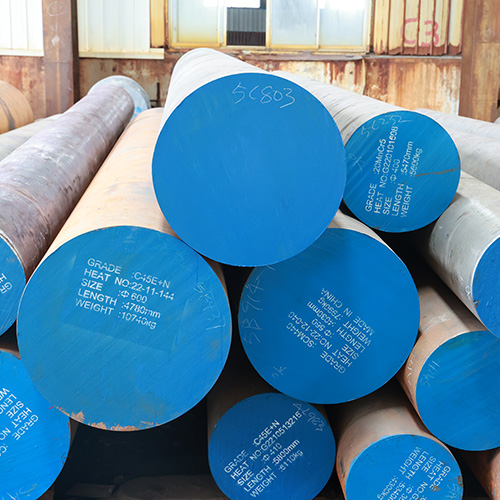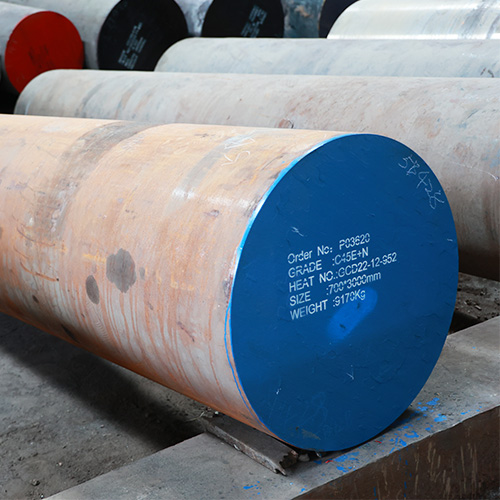Introduction

Carbon steel round bar is a versatile material widely used in modern engineering. Its unique properties, including strength, ductility, and weldability, make it a preferred choice for various applications. This blog will explore innovative uses of this material, highlighting its significance in diverse industries such as construction, automotive, and manufacturing.
Understanding Carbon Steel Round Bar
What is Carbon Steel Round Bar?
This product is a long, cylindrical metal rod made primarily from carbon steel, with carbon content typically ranging from 0.05% to 2.1%. The bar’s diameter can vary, with standard sizes ranging from 1/8 inch to several inches.
Properties of Carbon Steel Round Bar
The key properties include:
- High Strength: Excellent tensile strength makes it suitable for heavy-duty applications.
- Ductility: The ability to deform without breaking allows for complex shapes and designs.
- Weldability: Easily welded with various methods, making it adaptable for different projects.
- Cost-Effectiveness: A relatively inexpensive material compared to alternatives like stainless steel.
| Property | Value |
|---|---|
| Tensile Strength | 400-800 MPa |
| Yield Strength | 250-600 MPa |
| Elongation | 15-30% |
| Hardness | 120-200 HB |
Innovative Applications in Construction
Structural Components
In the construction industry, this material is extensively used for structural components. Its strength and durability make it ideal for beams, columns, and reinforcement bars in concrete structures. Engineers rely on these bars to enhance the load-bearing capacity of buildings.
Reinforcement in Concrete
In reinforced concrete applications, round bars serve as essential reinforcement elements. They improve tensile strength and prevent cracking, ensuring the longevity of structures. This practice demonstrates the importance of using such bars in modern engineering.
Applications in the Automotive Industry
Chassis and Frame Construction
In automotive engineering, these bars play a crucial role in chassis and frame construction. Their strength and ability to withstand stress make them a popular choice for vehicle frames, providing safety and stability for passengers.
Engine Components
Carbon steel round bars are also used in the manufacturing of engine components. From crankshafts to connecting rods, the toughness ensures that these critical parts can endure high temperatures and pressures without failing.
Manufacturing and Machinery
Machined Parts
These bars are widely used to create machined parts due to their workability. Industries utilize them to manufacture precision components, including gears, axles, and shafts, which require specific mechanical properties.
Tooling Applications
In manufacturing, carbon steel is often employed to produce tooling and dies. Their ability to be heat treated allows for enhanced wear resistance, making them suitable for cutting tools and molds.
Aerospace and Defense Applications
Structural Integrity
In the aerospace industry, carbon steel round bars are utilized in applications demanding high structural integrity. The strength-to-weight ratio is beneficial in crafting components that withstand extreme conditions.
Defense Mechanisms
For defense applications, these bars are used in producing armor and protective equipment. The robustness ensures reliable performance in critical situations.
Innovative Processing Techniques

Heat Treatment and Surface Hardening
Modern engineering employs advanced processing techniques to enhance the properties of carbon steel round bars. Heat treatment and surface hardening processes improve hardness and wear resistance, making them suitable for high-performance applications.
Additive Manufacturing
The rise of additive manufacturing has introduced new possibilities for these bars. Techniques like 3D printing allow for creating complex shapes that were previously difficult to achieve with traditional methods.
Conclusion
In conclusion, the innovative uses of carbon steel round bars in modern engineering are vast and varied. From construction to aerospace, this versatile material plays a crucial role in ensuring structural integrity, durability, and functionality. As industries continue to evolve, the demand for these bars will likely grow, further solidifying their position as a cornerstone of modern engineering.
FAQ
Q:What are the common grades of carbon steel round bars?
A:Common grades include A36, A516, and 1045, each suited for different applications based on strength and ductility.
Q:How is carbon steel round bar manufactured?
A:It is typically manufactured through processes such as hot rolling or cold drawing, ensuring uniform diameter and surface finish.
Q:Can carbon steel round bar be welded?
A:Yes, these bars can be welded using various techniques, including MIG, TIG, and stick welding, due to their excellent weldability.
Q:What are the primary advantages of using carbon steel round bars?
A:The primary advantages include high strength, good ductility, weldability, and cost-effectiveness compared to other materials.
Q:Are there any limitations to carbon steel round bars?
A:Yes, they can be prone to corrosion if not properly treated or coated, making them less suitable for environments with high humidity or exposure to corrosive substances.
Q:How are carbon steel round bars used in rebar applications?
A:In rebar applications, these bars provide tensile strength to reinforced concrete structures, preventing cracks and ensuring durability.
Q:What industries rely heavily on carbon steel round bars?
A:Key industries include construction, automotive, manufacturing, aerospace, and defense, each utilizing these bars for their unique properties.
